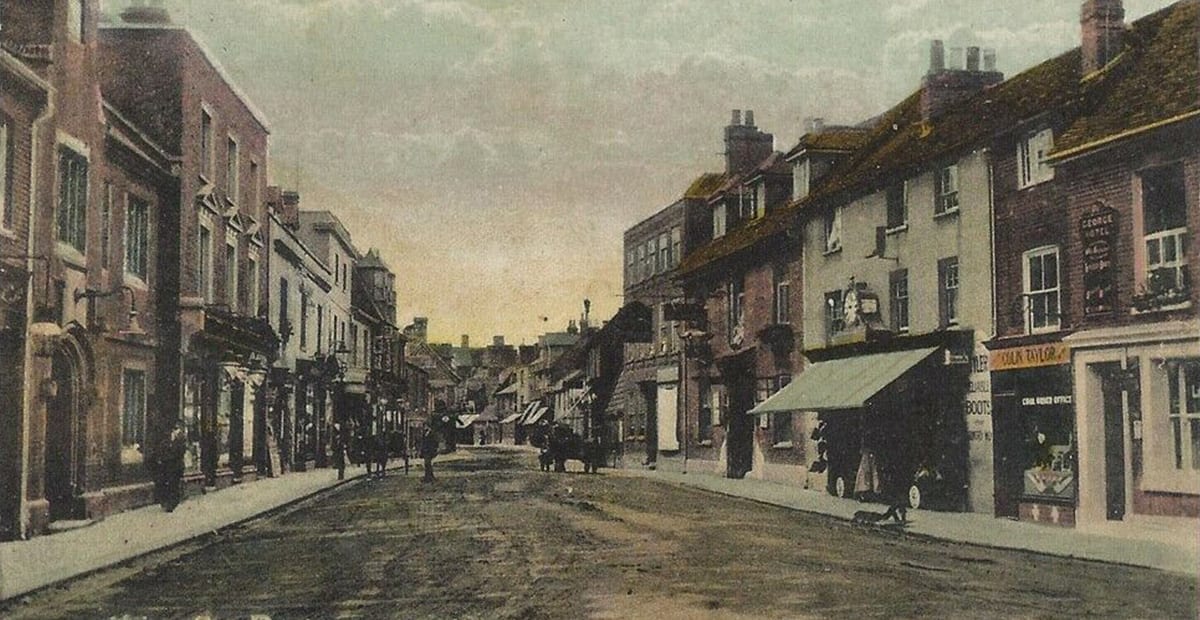Rickmansworth – Our Town (Part 2)
Rickmansworth – Our Town (Part 2)

Following on from our previous email on the history of Rickmansworth, here is our second bulletin.
Missed the first bulletin? Click here
History #2
Rickmansworth became a market town by a charter of Henry VIII in 1542, whereby the bailiffs and inhabitants were licensed to hold a market on Saturdays and a fair on the feast of the Assumption. A large timber-framed market-house was erected in the High Street, and was granted in 1627–8 to William earl of Pembroke. It formed an obstruction to traffic, and was pulled down in 1805, when another market-house was opened nearly opposite, chiefly for the sale of corn. In 1868 it was pulled down and a town hall erected on the site. In 1882 the statute fair, held on the second Saturday in September for the hiring of farm servants, was abolished. This fair was locally known as a ‘statty,’ and by the middle of the nineteenth century had quite lost its usefulness, as most of the labourers who attended had no intention of leaving the service they were then in, but used the fair as a time-honoured excuse for spending their harvest-money on beer at some of the many inns and beershops, of which there forty-nine, but just one beer shop nowadays!!!
The three local rivers – the Colne, Chess and Gade – provided water for the watercress trade and power for corn milling, silk weaving, paper making and brewing in the town. The free-flowing and abundant waters also made Rickmansworth an ideal location to route the Grand Union canal which in part follows the valley of the River Gade. Development of the canal also greatly assisted the growth of these industries and was a defining factor in the growth and development of Ricky until technology played its hand with the introduction of the Railways in the mid to late 19th Century – more of that later.
Locally the canal was developed and adapted – with various branches and cuts – to meet the needs of Rickmansworth many industries. One branch formed part of the River Chess but changed in 1804 to serve the former Salters Brewery (Salters Way). It ran for 540 yards from the brewery, though Chess Lock next to the Canal Centre and on to Town Wharf. Its traffic with hundreds of barrels of beer made its way to Uxbridge and back! Next to it stands what is now Batchworth Canal Centre – once part of an old stable block.
Another was a 150-yard cut built in 1818 to serve Batchworth Mill, which had just become part of the growing John Dickinson (of Croxley) paper making empire and is now used by Affinity Water. The cut actually comes off the River Colne as it heads to cross the canal having come through the mill, having powered the machinery until 1910 or so. John Dickinson opened another paper mill in 1830 next to the Grand Union Canal at Croxley. This later became the largest paper pulp mill in Europe and depended largely on the canal for supplies of coal from the Midlands, as well as raw materials like esparto grass brought up, often by barge, from London Docks.
A third branch next to St. Mary’s Church in the town centre travelled 300 yards through Bury Grounds to deliver flour to John Taylor’s bakehouse.
Rickmansworth – Fun Facts!
Rickmansworth has been home to various famous people including:
● Cardinal Wolsey (Manor of the More, 1522–1530
● George Eliot (pen-name of Mary Anne Evans – The Elms, 1875)
● Val Doonican crooner (resided in The Drive, Rickmansworth)
With thanks to our very very good friend, the acclaimed author, award winning blogger, qualified London tour guide, and all over enthusiast about London and its environs, Rob Lordan. Check this amazing guy out at https://robslondon.com/. Oh yeah….we may have had a wee look at Wikipedia too…just to check the “facts”.
Image used is Rickmansworth High Street in 1910.
Come on In!
SUN - THURS
12:00pm - 11.00pm
FRIDAY
12:00pm - 11.30pm
Saturday
11:00am - 11:30pm
Last order 30 mins before closing
Contact US
Phone Us
07477 495 015
Email Us
Address
124, High Street, Rickmansworth,
Hertfordshire, WD3 1AB
